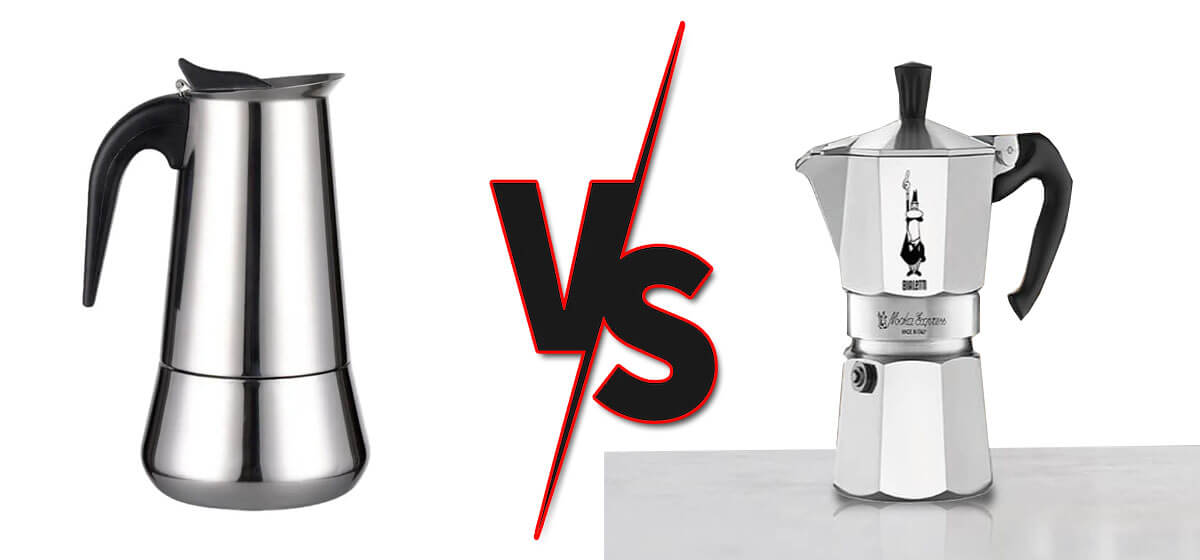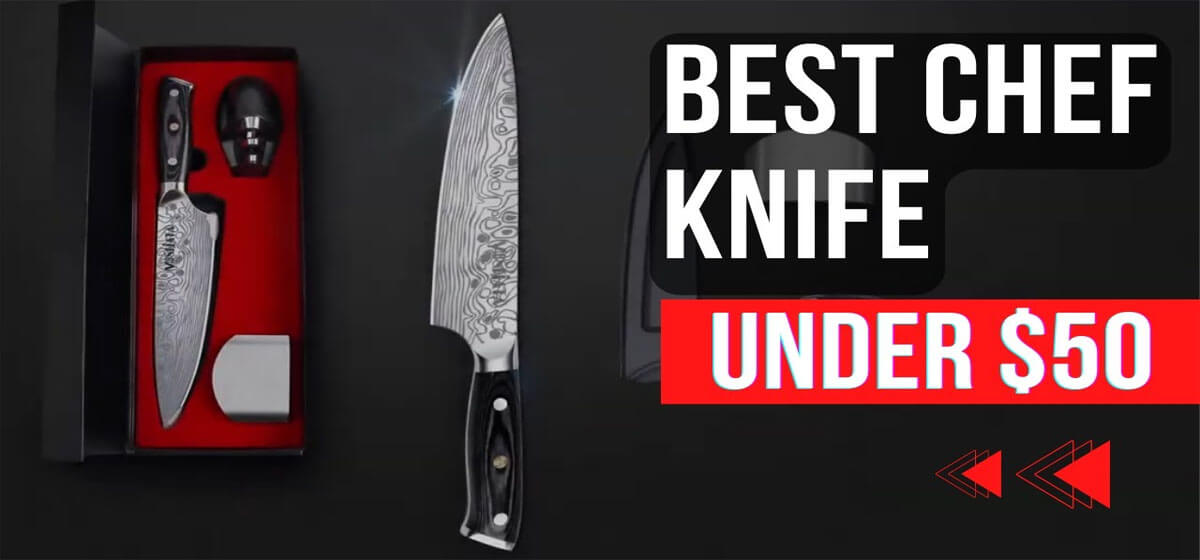Forged Vs Stamped Knives : The Ultimate Comparison
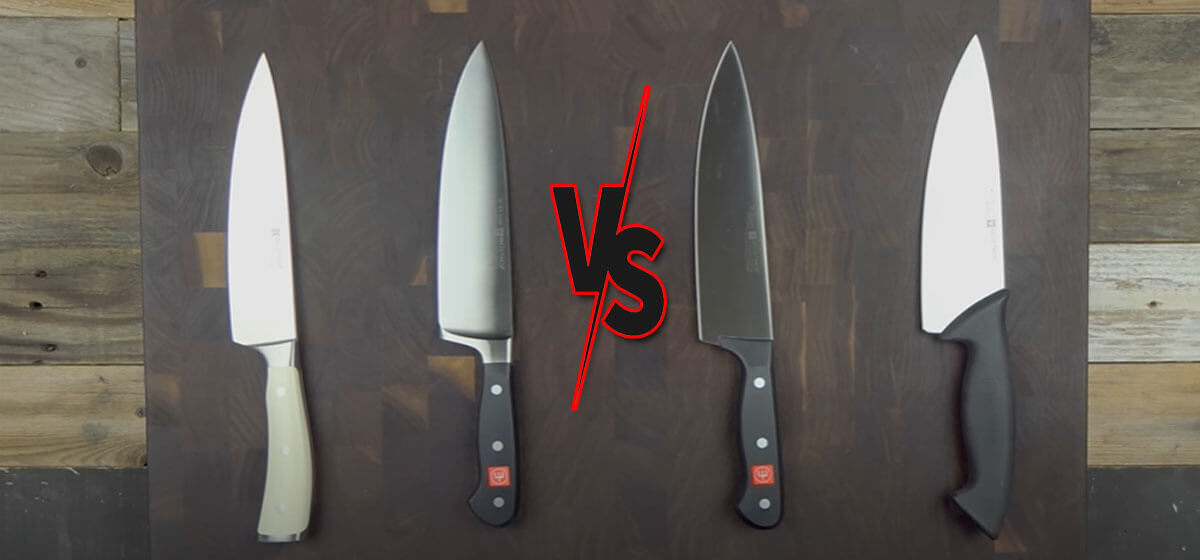
As an Amazon Associate I earn from qualifying purchases.
When choosing between forged and stamped knives, consider the durability and precision of forged knives versus the affordability of stamped knives. The manufacturing process significantly impacts the performance and quality of the knives.
Forged knives are made by heating and shaping a single piece of steel, resulting in a stronger, heavier, and long-lasting blade. Stamped knives, on the other hand, are mass-produced by cutting the blade shape from a large sheet of steel, making them lighter and more affordable.
Understanding the differences between forged and stamped knives will help you make an informed decision based on your cooking needs and budget. We will delve into the characteristics, pros, and cons of both types of knives to help you choose the right one for your kitchen.
Understanding The Basics
When it comes to kitchen knives, understanding the basics of forged and stamped knives can make a world of difference in determining their quality and performance. These two terms often pop up when shopping for knives, and if you’re new to the world of kitchen cutlery, the differences can be confusing. Let’s delve into the definitions of forged and stamped knives to gain a clearer understanding of these essential basics.
Definition Of Forged Knives
Forged knives are crafted from a single piece of steel that is heated and then shaped using a hammer or press. This process creates a sturdy and durable blade with a bolster—an extension of the blade where it meets the handle—which provides balance and weight distribution. The knife is then tempered to enhance its strength and hardness. The forging process typically involves skilled craftsmanship and is known to produce high-quality, long-lasting knives.
Definition Of Stamped Knives
Stamped knives, on the other hand, are created using a different manufacturing method. These knives are mass-produced by blanking the shape of the blade from a large sheet of steel. The blades are then machine-cut and ground to their final shape. Stamped knives generally lack a bolster and are lighter in weight compared to forged knives. While they may not offer the same level of durability as their forged counterparts, they are often more affordable and suitable for everyday use.
Manufacturing Process
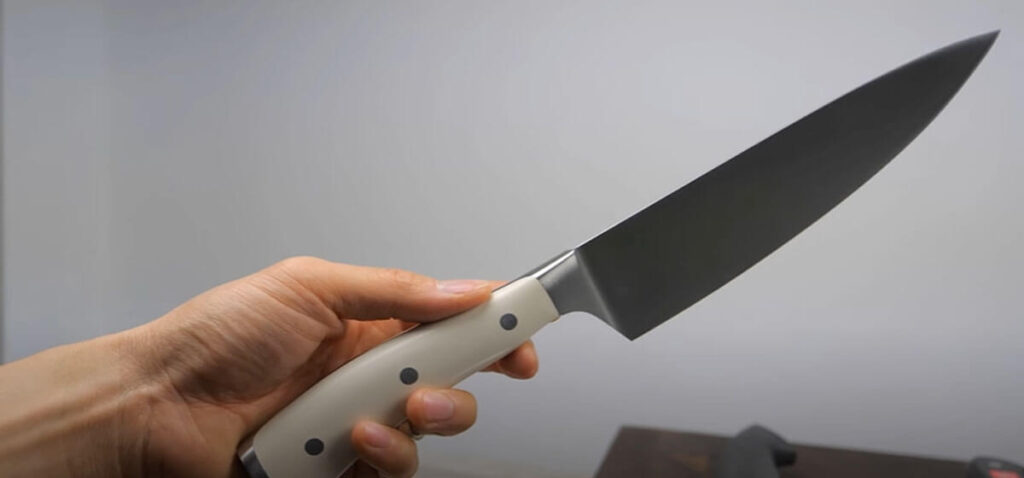
Forged Knives Production
Forged knives are known for their superior quality and strength due to the manufacturing process. The production of forged knives involves meticulous craftsmanship and expertise. The process starts with a single piece of steel being heated to high temperatures and then hammered into the desired shape. This intense heat and pressure result in a dense and sturdy blade that is ideal for precision cutting and durability. The blade is then honed and polished to perfection, enhancing its sharpness and overall quality.
Stamped Knives Production
Stamped knives are produced using a different manufacturing method compared to forged knives. The process involves cutting the knives’ shapes from large sheets of steel using a stamping press. This method allows for mass production and is more cost-effective, making stamped knives a popular choice for commercial kitchens and everyday use. However, the blades of stamped knives are generally lighter and less durable compared to forged knives due to the production process.
Quality And Durability Factors
When it comes to choosing between forged and stamped knives, quality and durability are essential factors to consider. These aspects determine the longevity and performance of the knives, making an informed decision crucial for individuals and professionals alike. In the following sections, we will delve into the material quality differences and the strength and longevity of forged vs stamped knives, providing insights to aid in your decision-making process.
Material Quality Differences
One of the key aspects that set forged knives apart from stamped knives is the quality of materials used in their construction. Forged knives are crafted from a single piece of steel, which undergoes a meticulous forging process to enhance its strength and durability. This method ensures that the blades are less likely to chip or break, providing a superior cutting experience.
In contrast, stamped knives are manufactured from a large sheet of steel, where the blades are stamped out using a machine. This process results in blades that are generally thinner and less sturdy compared to forged knives. The difference in material quality directly impacts the overall performance and lifespan of the knives.
Strength And Longevity
The strength and longevity of knives go hand in hand with the manufacturing process and materials used. Forged knives exhibit exceptional strength due to the forging technique, which aligns the grain structure of the steel, resulting in a more robust blade. This construction makes forged knives capable of withstanding heavy-duty usage and maintaining their sharpness over time.
On the other hand, stamped knives, while suitable for lighter tasks, may lack the durability required for extensive, demanding use. The inherent thinness of stamped blades makes them susceptible to bending and dulling more quickly, necessitating frequent sharpening and replacement.
Performance And Precision
Performance and precision are key factors to consider when choosing between forged and stamped knives. The cutting ability, edge retention, and overall precision can greatly impact the efficiency and effectiveness of a knife. Understanding the differences in these aspects can help you make an informed decision when selecting the right knife for your needs.
Cutting Ability
A forged knife typically offers superior cutting ability as compared to a stamped knife. Forged knives are crafted from a single piece of metal, resulting in a stronger and more robust blade that can effectively tackle various cutting tasks with precision. The hand-forging process aligns the molecular structure of the steel, creating a blade that provides enhanced cutting power and stability. On the other hand, stamped knives are cut from a large sheet of steel, which may result in a less precise and consistent cutting edge.
Edge Retention
Forged knives are lauded for their exceptional edge retention capabilities. The meticulous forging process and high-quality materials used in their construction contribute to a blade that retains its sharpness for longer periods. This is particularly beneficial for professional chefs and cooking enthusiasts who require a reliable cutting edge. In contrast, while stamped knives can still maintain good sharpness, they generally have a shorter edge retention lifespan due to their manufacturing process and the type of steel used.
Cost And Affordability
When considering the cost and affordability of knives, it’s essential to compare the differences between forged and stamped blades. Forged knives tend to be pricier than stamped knives due to their intricate manufacturing process, higher-quality materials, and better durability. Stamped knives, on the other hand, are more budget-friendly and offer decent performance for everyday kitchen tasks.
Cost and Affordability When it comes to choosing between forged and stamped knives, one of the most crucial factors to consider is the cost and affordability. This decision can have a significant impact on your kitchen investments and cooking experience. Let’s dive into the comparison to help you make an informed choice. Initial Investment For many, the initial price tag may heavily influence their knife selection.
Forged knives are crafted through a complex, labor-intensive process, involving individually forged blades, thus making them more expensive upfront. On the other hand, stamped knives are mass-produced using stamped machine technology, making them more budget-friendly initially. Long-term Value While the initial cost may sway your decision, it’s essential to consider the long-term value and durability of your investment:
Forged Knives-
Durability: Crafted from a single piece of steel, forged knives often boast superior strength and resilience, making them more likely to withstand the test of time.
Edge Retention: The quality of the steel used and the meticulous forging process often results in unparalleled edge retention, reducing the need for frequent sharpening. –
Resale Value: Due to their high-quality construction and durability, forged knives may retain or even increase in value over time, making them a worthwhile long-term investment.
Stamped Knives –
Replacement Costs: While initially more affordable, stamped knives may require more frequent replacement due to their lack of resilience and durability, potentially leading to higher long-term costs. – Edge Maintenance: Stamped knives may require more frequent sharpening, leading to additional time and money spent on edge maintenance.
Resale Value: Due to their mass-produced nature, stamped knives generally have lower resale value, making them less favorable for long-term investment. In conclusion, while the upfront cost of stamped knives may be more appealing, considering the long-term value and investment in a forged knife set may ultimately provide more durability and satisfaction. It’s crucial to weigh the initial investment against long-term benefits and usage to make an informed decision that aligns with your cooking needs and budget. In the end, whether you choose forged or stamped knives, investing in quality knives that will serve you well and suit your culinary needs is a decision that can positively impact your cooking and meal preparation experience.
Maintenance And Sharpening
When it comes to maintenance and sharpening, forged knives generally require less frequent sharpening compared to stamped knives due to their durable, thick blades. The forging process results in a stronger blade that holds its edge longer, reducing the need for frequent maintenance.
Stamped knives, on the other hand, have thinner blades that may require more frequent sharpening to maintain their edge.
Maintenance and sharpening are crucial aspects of keeping your knives in top condition, and the type of knife you have plays a significant role in the care it requires. When it comes to comparing forged and stamped knives, understanding the proper care for each type is essential for ensuring their longevity and performance.
Proper Care For Forged Knives
Proper maintenance of forged knives is vital for preserving their sharpness and durability. Handwashing these knives is recommended to avoid damaging the blade and handle materials. Additionally, ensure that forged knives are thoroughly dried before storage to prevent rust and corrosion. Sharpening a forged knife typically requires less frequency compared to stamped knives due to their dense and sturdy blade construction. Regular professional honing can help to maintain the sharp edge, and when it’s time to sharpen the knife, using a sharpening stone with a 20-degree angle can help to restore its edge. Proper care for forged knives involves simple yet crucial steps that can prolong their lifespan and effectiveness.
Proper Care For Stamped Knives
Stamped knives, being thinner and less resilient than forged knives, require special care to maintain their sharpness and longevity. When washing stamped knives, extra caution is essential to avoid bending or warping the blade. It is recommended to wash them by hand and promptly dry them after use to prevent corrosion. Stamped knives typically need more frequent honing and sharpening due to their thinner blades.
Regular honing with a honing steel can help to maintain their edge, and when it’s time to sharpen, using a sharpening rod with a 15-degree angle is essential for restoring their sharpness. Proper care for stamped knives involves more frequent attention to sharpening and honing due to their lightweight and thin blade construction. In conclusion, when it comes to maintenance and sharpening, understanding the specific needs of forged and stamped knives is essential for ensuring their longevity and performance. By following the appropriate care guidelines for each type of knife, you can maintain their sharpness, durability, and overall effectiveness.
Choosing The Right Option
Navigating the world of kitchen knives can be a daunting task, especially when it comes to the debate between forged and stamped knives. Both options have their own unique qualities, and the right choice depends on the specific needs and preferences of the user. Whether you’re a home cook or a professional chef, understanding the considerations for each type of knife can help you make an informed decision.
Considerations For Home Cooks
When choosing between forged and stamped knives for home use, there are several factors to consider. Durability is a key consideration as home cooks may not be as gentle with their knives as professional chefs. Forged knives are typically known for their durability and strength, making them suitable for heavy daily use. On the other hand, stamped knives may require more frequent sharpening and are generally considered less durable.
Budget is another important factor for home cooks. Stamped knives are often more affordable than their forged counterparts, making them an attractive option for those on a tight budget. Additionally, weight and comfort can also play a role in the decision-making process. Stamped knives are generally lighter and may be more comfortable for individuals who are not accustomed to heavier knives.
Considerations For Professional Chefs
For professional chefs, the considerations for choosing between forged and stamped knives may differ slightly. Performance and precision are critical for chefs, and forged knives are often praised for their superior performance. The weight and balance of forged knives allow for greater control and precision during intricate cutting tasks. Conversely, stamped knives may not offer the same level of control and precision needed in a professional kitchen.
Durability is also a crucial consideration for professional chefs who rely on their knives for long hours each day. The robust construction of forged knives makes them more suitable for heavy-duty use and less prone to damage from constant use. Additionally, maintenance and sharpening play a role in the decision-making process. While forged knives may require less frequent sharpening and maintenance, stamped knives may need more regular upkeep to maintain their edge.
In conclusion, whether you’re a home cook or a professional chef, making the right choice between forged and stamped knives requires an understanding of the unique considerations for each. Factor in aspects such as durability, budget, weight, and precision to make an informed decision that aligns with your specific needs and preferences.
Frequently Asked Questions On Forged Vs Stamped Knives
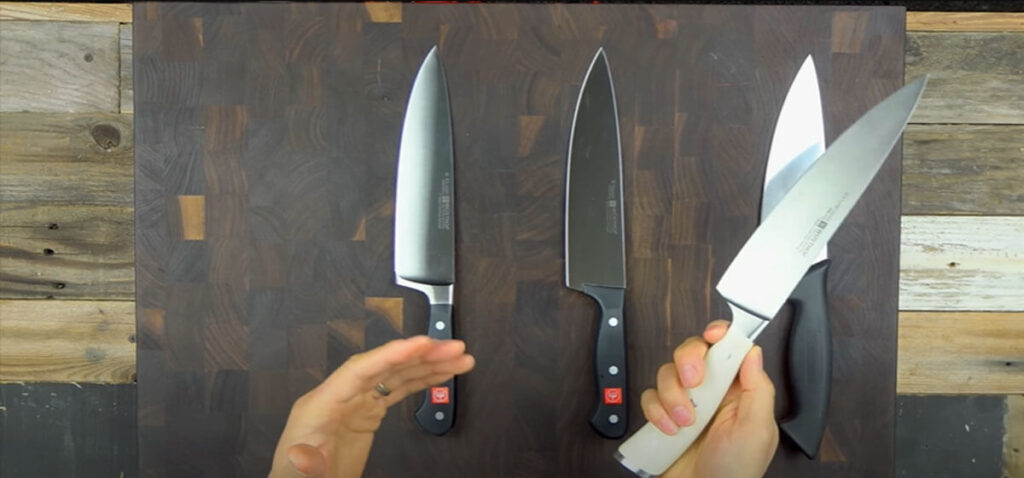
What Are The Main Differences Between Forged And Stamped Knives?
Forged knives are made from a single piece of steel, offering better strength and durability. Stamped knives are cut from a sheet of steel and tend to be lighter and more affordable. They both have their advantages and drawbacks, so it ultimately depends on your specific needs and preferences.
Which Type Of Knife Is Better For Professional Chefs, Forged Or Stamped?
Professional chefs often prefer forged knives due to their superior strength and durability. The single-piece construction of forged knives provides better balance and stability, making them ideal for heavy use in a professional kitchen setting. However, stamped knives can also be suitable depending on the specific requirements and preferences of the chef.
Are Forged Knives More Expensive Than Stamped Knives?
Yes, generally, forged knives tend to be more expensive than stamped knives. The labor-intensive manufacturing process of forging contributes to higher production costs, which is reflected in the price. However, the initial investment in a quality forged knife can pay off in the long run due to its durability and longevity.
Which Type Of Knife Holds Its Edge Better, Forged Or Stamped?
Forged knives typically hold their edge better than stamped knives. The forging process aligns the steel’s molecular structure, resulting in a stronger and longer-lasting edge. Stamped knives, while initially sharp, may require more frequent sharpening to maintain their edge due to their lighter and less dense construction.
Conclusion
Both forged and stamped knives have their unique qualities and uses. Forged knives offer superior strength and durability, suitable for heavy-duty tasks. On the other hand, stamped knives are more affordable and convenient for everyday use. Ultimately, your choice depends on your cooking style and needs.
Both types have their place in the kitchen.
Amazon and the Amazon logo are trademarks of Amazon.com, Inc, or its affiliates.


